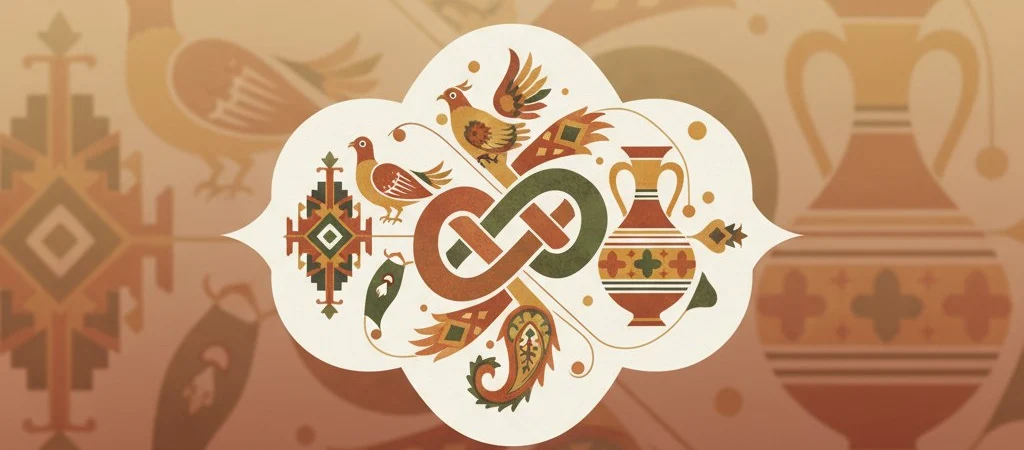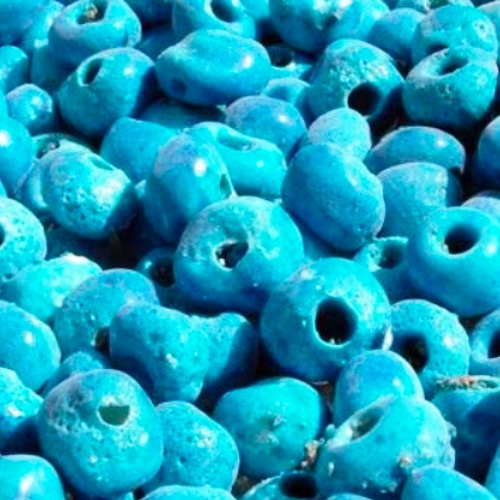
KharMohre



story of Khar Mohre
Khar Mohre is made from silica clay and a binding element such as gum tragacanth or starch, both of which are plant-based and are used in a blue glaze to ward off the evil eye and negative energies. In Dehkhoda's dictionary, Khor Mehr is described as "cheap beads that are worn around the neck of a donkey." Kharmohre is actually a type of special ceramic that, unlike traditional ceramics made from clay, is made from white clay, silica, or flint. Kharmohre is usually produced in blue, a color beloved by Iranians. The glaze covers the balls and creates a uniform surface. In the past, Khar Mehre was primarily used for adorning pack animals and had more of a decorative function, but today it has found many applications, and using molds, items such as moons, stars, flowers, flat beads, and many decorative forms are produced and marketed. Qom is recognized as the capital of Khar Mohre production, not only in Iran but in the world.The blue color of Khar Mohre is calming and holds special significance for Iranians.
The history of Khar Mehre dates back to the time of the copper kilns, approximately 6000 years ago. Since silica clay or flint is not adhesive, gum tragacanth or starch, which is plant-based, is used in the production of Khar Mohre. The white silica clay is mixed with a bit of starch to create a sticky paste, which is then shaped into small balls by hand and rolled in glaze. A hole is made in each ball, and they are placed among the kiln's clay. During firing at very high temperatures, the balls become red-hot, and the organic starch burns off and evaporates, gradually being replaced by glaze, which causes the clay to stick together. As mentioned, the history of Khar Mohre in Iran goes back to ancient times, and it is even referenced in our poetry, as Hafez says, "Ah, the pain from the gem traders who do not recognize the gems / Every time they compare Khar Mohre with pearls." In another place, our esteemed poet Nizami states: "Sometimes when Khar Mohre is brought to him / When it falls, all draw their daggers."
The glaze of Khar Mohre is also unique and consists of plant elements such as the plant "Ashnavan," mineral elements like lime, quartz powder, one percent copper oxide, and a little charcoal powder. Today, Khar Mohre is produced in various shapes such as circles, stars, moons, crosses, ashtrays, medals, pendants, and even in the form of stones resembling turquoise. For this reason, Khar Mohre has taken on the role of a souvenir and, due to its uniqueness, naturalness, and antiquity, can replace many gifts and souvenirs. Qom is the largest producer and exporter of Khar Mohre in the world, and today their products are sold in various parts of the continent. Sanapersian hopes to witness the purchase of Khar Mohre in Iran, Qom Province, and the city of Qom in the near future. Looking forward to that day.
Contact Us
+989054577261